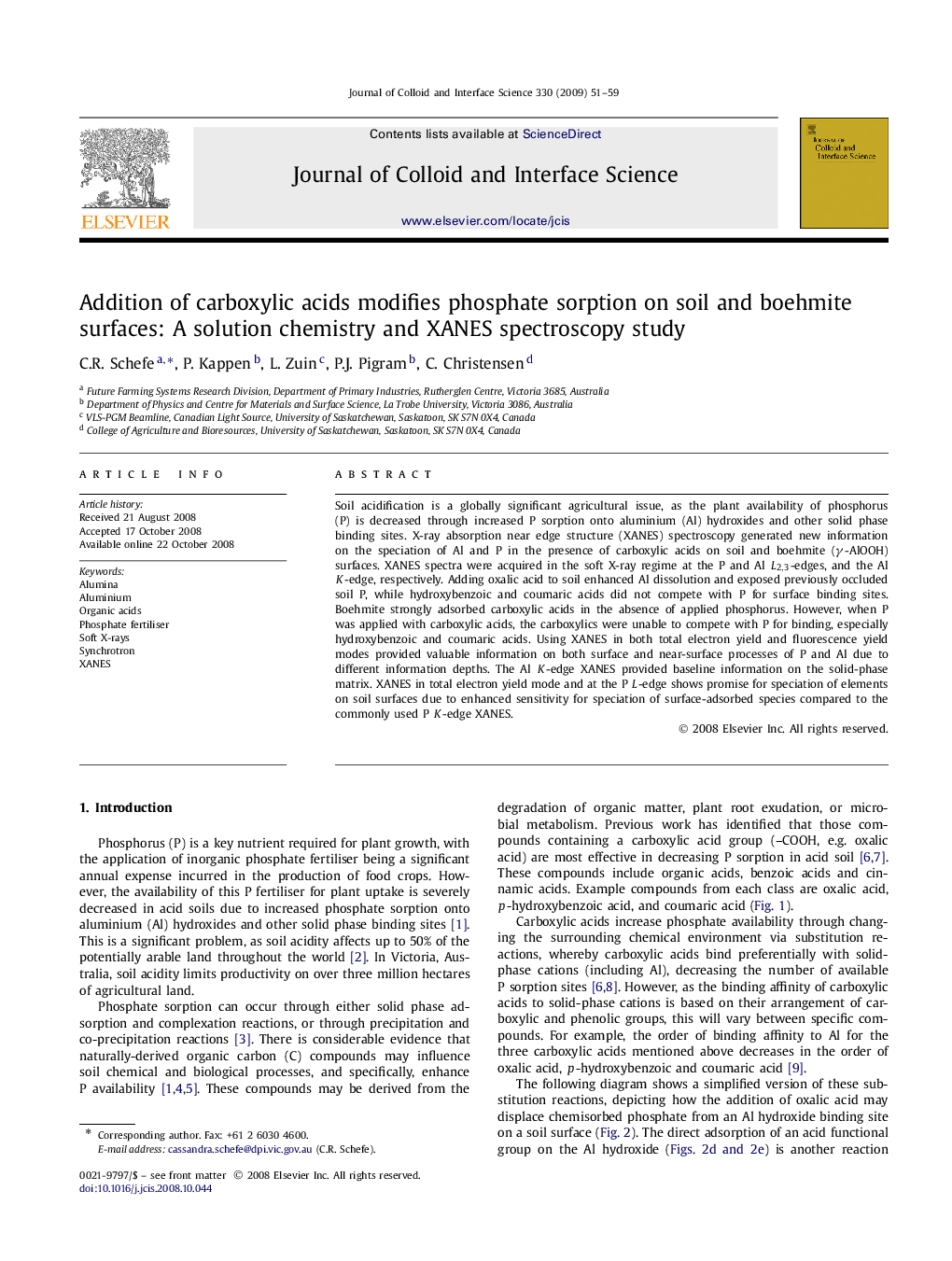| Article ID | Journal | Published Year | Pages | File Type |
|---|---|---|---|---|
| 610785 | Journal of Colloid and Interface Science | 2009 | 9 Pages |
Soil acidification is a globally significant agricultural issue, as the plant availability of phosphorus (P) is decreased through increased P sorption onto aluminium (Al) hydroxides and other solid phase binding sites. X-ray absorption near edge structure (XANES) spectroscopy generated new information on the speciation of Al and P in the presence of carboxylic acids on soil and boehmite (γ -AlOOH) surfaces. XANES spectra were acquired in the soft X-ray regime at the P and Al L2,3L2,3-edges, and the Al K-edge, respectively. Adding oxalic acid to soil enhanced Al dissolution and exposed previously occluded soil P, while hydroxybenzoic and coumaric acids did not compete with P for surface binding sites. Boehmite strongly adsorbed carboxylic acids in the absence of applied phosphorus. However, when P was applied with carboxylic acids, the carboxylics were unable to compete with P for binding, especially hydroxybenzoic and coumaric acids. Using XANES in both total electron yield and fluorescence yield modes provided valuable information on both surface and near-surface processes of P and Al due to different information depths. The Al K-edge XANES provided baseline information on the solid-phase matrix. XANES in total electron yield mode and at the P L-edge shows promise for speciation of elements on soil surfaces due to enhanced sensitivity for speciation of surface-adsorbed species compared to the commonly used P K-edge XANES.
Graphical abstractAddition of oxalic acid to soil may displace chemisorbed phosphate from Al binding sites on soil surfaces, also potentially removing Al from the surface and exposing previously-bound soil P.Figure optionsDownload full-size imageDownload as PowerPoint slide
